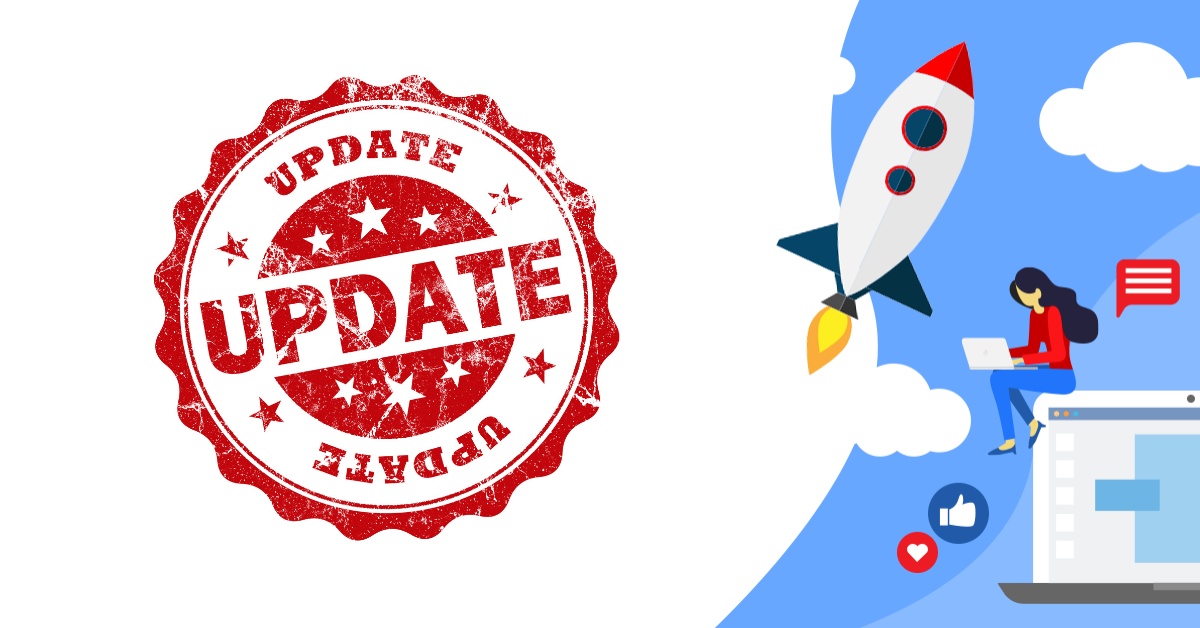

Important Updates for Facebook and Google Advertising
Well, it’s official. Apple has confirmed that with the iOS14 update (coming next week), users will be asked permission before apps can use their unique Identifier for Advertisers (IDFA) for third-party app tracking. The goal is to give users transparency and the opportunity to protect their privacy and information. Prior to the iOS 14 update, users could achieve this by going to their privacy settings and turning off “allow apps to request to track.” Additionally, Google has confirmed that it will make third-party cookies obsolete by 2022. So, Google will no longer track individuals as they browse across the web.
What does all of this mean for your team and how can you prepare? Don’t you worry! Our senior digital marketing strategists have put a plan together for you to ensure your tracking remains as effective and efficient as ever.
How your Social Media Advertising Will Be Affected
Using the Facebook pixel as an example, you’d install scripts on the website that would fire certain events. These events store data and relay that information to your campaigns, which enables you to track and provide insights on what campaigns are working and which ones aren’t. With the iOS 14 update, you are now only allowed 8-pixel objectives on a single domain, which reduces the amount of data you can collect and report on. If an advertiser wants to optimize for value, this will take up 4-pixel objectives.
Other changes to be aware of:
- 28-day click, 28-day view, and 7-day view attribution will no longer be available. New attribution models are 1-day click, 7-day click, 1-day click or view, 7-day click or 1-day view.
- Conversion events will be reported at the time of the conversion, not the time of the impression.
- Interest-based and Lookalike audiences will most likely not see a performance dip, since this information comes straight from user behavior that happens inside of Facebook.
- Retargeting performance will dip. Unfortunately, only time will tell just how big of an impact the change will have.
What can you do?
- Setting up server-side tracking can help mitigate the new update: Server-side tracking sets up a new flow where data is sent directly from your site to Facebook without needing a cookie in your users’ browser. User clicks ad > goes to your website > converts > server sends the conversion data and user info directly to Facebook.
- If you are on Shopify and you are using the default Facebook app, all you need to do is set tracking to the maximum.
- For other CMS, a developer will need to integrate server-side tracking, using this API documentation.
How your Google Ads Tracking Will Be Affected
Google will stop enabling cross-site tracking and targeting users outside its own properties. Advertisers will still be able to target their own database of consumers through their own first-party data on Google properties such as SERP and YouTube. The ad targeting changes are focused on websites and will not apply to the mobile app ads bought and sold through Google.
Google also announced the Federated Learning of Cohorts (FLoC), which proposes a new way for businesses to reach people with relevant content and ads by clustering large groups of people with similar interests. This approach effectively hides individuals “in the crowd” and uses “on-device” processing to keep a person’s web history private on the browser.
By creating simulations based on the principles defined in Chrome’s FLoC proposal, Google’s ads teams have tested this privacy-first alternative to third-party cookies. Google has stated: “Results indicate that when it comes to generating interest-based audiences, FLoC can provide an effective replacement signal for third-party cookies. Our tests of FLoC to reach in-market and affinity Google Audiences show that advertisers can expect to see at least 95% of the conversions per dollar spent when compared to cookie-based advertising.” The specific result is dependent on the strength of the cluster and the target audience.
Other changes to be aware of:
- Advertisers will no longer be able to target based on behaviors, so display ads and video ad inventory will be affected. This may also be true outside of Google with Programmatic vendors, or other direct publishers who lose their access to 3rd party cookie data. This is why vendors like The Trade Desk and others have started to create their own unified tracking ID which is based on eMail address.
- Google will still allow targeting across its own properties when a user is logged into their Google account.
What can you do?
- In May Google ads will set a first-party cookie with a new identifier that you can implement via GTM or the Global site tag. The change to first-party cookies will help mitigate the effects of moving away from third-party cookies and help improve how conversions will be attributed back to advertising efforts.
- Implement sitewide tagging with the global site tag or GTM.
- FLoC
- FLoC will enable “interest-based” advertising, without letting advertisers pull out specific user information.
- Chrome browsers will use algorithms to create a large number of “cohorts”, this will group people that share similar themes and interests, while keeping individual browsing history private.
- FLoC is currently in origin trial, you are able to begin testing without asking browser users to turn on specific flags.
The world of advertising is ever-evolving and can become overwhelming quickly. If you’d like guidance or assistance with making these changes, we are here to help! Get in touch with us today.
Black Friday & Cyber Monday Insights: Consumer Trends, Spending Habits, and New Marketing Strategies
LET'S TALK ABOUT
YOUR NEXT PROJECT
Choose the service your business needs, or both!


